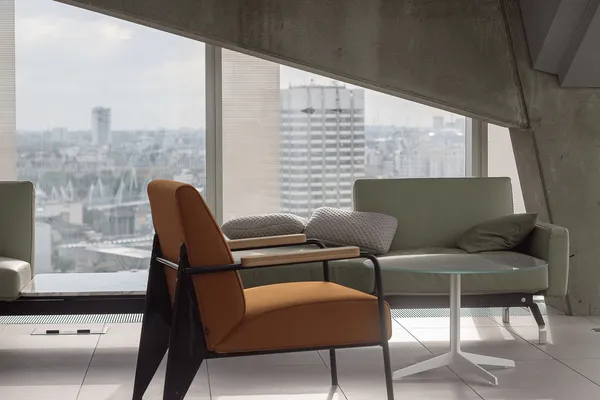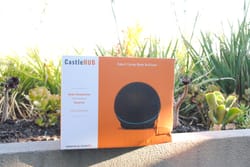I used CastleOS in my apartment for about three months. After constant crashing, my morning weather script not speaking every morning, and an extremely slow development timeframe, it was time to move somewhere else.
So where does one go from here? The CastleHUB Kickstarter set me back $400. Not to mention the cost of two Microsoft Kinect Sensors (one which I couldn't even use). If there's something I can learn from my experience with CastleOS, wherever I go, the system must be open. This was one of the promises of the CastleHUB Kickstarter. A complete and open API. I don't doubt that will come to CastleOS, however the fact that Kinect v2 support has been well over a year delayed, I can't sit around waiting for CastleOS to open up their API.
[mk_fancy_title tag_name="h2" style="true" color="#393836" size="16" font_weight="inhert" margin_top="0" margin_bottom="18" font_family="none" align="left"]Homeseer[/mk_fancy_title]

I have the Microsoft Kinect for Xbox 360, as well as a whole bunch of Z-Wave Gear. The CastleHUB runs Windows 10, although I'm starting to doubt whether its powerful enough to run Homeseer. With CastleOS disabled, Windows is complaining there's not enough memory to run basic things like a web browser.
If I wanted to use as much of the Hardware from my CastleOS experiment as possible, Homeseer would be the logical choice. Every six months (May and November) they run a 50% off sale for Homeseer Software. That's all good, until you see the full price of Homeseer!
Homeseer ticks all the boxes. Its also one of the most reliable Home Automation software on the market. I know they're going to play well with all my Z-Wave Gear, as they're Z-Wave Plus Certified. I won't have issues with my multisensors not working, Z-wave devices randomly turning themselves on and off. Things should just work. There's also the Homeseer Kinect Plugin. I'll be able to have even more powerful voice control than CastleOS. However, I still won't be able to use the expensive Kinect v2 sensor I purchased.
So, let's assume I purchase Homeseer Pro, their top-of-the-line product. For that price I'll also get their touch designer software. I'm not fussed about that. At 50% off, I'm still paying US$300 (AU$400). Around the same price I paid for the CastleHUB, without any hardware. However, if its reliable maybe it's worth it.
Oh hang on a second. What's that little asterisk? Third party plugins available for an additional cost? That seems fair. Let's take a quick look at the third-party plugins I'll need with my current gear. I have Philips Hue, so I'll need to buy a plugin to get that supported. Really? I need to pay for that? Seems like that should be built in. Oh well. That's US$30. The Kinect Plugin is also US$30. Alone the prices are pretty reasonable. Media Playback...oh there's no Plex support. That sucks. At least they have Kodi/XBMC support for US$40.
Let's see what else I already have that I could use. Oh look they have IFTTT support...for another US$30. Harmony Hub, US$30.
Okay, so let's tally this all up. With all those plugins what's the damage? US$460 (AU$615). Remembering how much I spent on the CastleHUB, its a big risk.
Luckily Homeseer offer a free trial. I gotta say that I'm glad they do. Because their user interface sucks. I thought CastleOS was bad, Homeseer is worse. There is no way I can justify spending that much money on software that looks this bad.
[mk_fancy_title tag_name="h2" style="true" color="#393836" size="16" font_weight="inhert" margin_top="0" margin_bottom="18" font_family="none" align="left"]SmartThings[/mk_fancy_title]

The Samsung SmartThings Hub was the hub that started them all. Originally a very successful Kickstarter Campaign, the product has a lot of users already. It's ease-of-use, and eco system of companion products like sensors and starter kits make it attractive to less tech-savvy users.
SmartThings is however cloud based. Without an active internet connection, your home automation stops working. After seeing what Nest have done to the Revolv Hub, there's always a risk in a few years time the SmartThings Hub won't work if the servers are shut down. Being cloud based also means more latency, which means your lights or switches may take slightly longer to turn on, while they're waiting for the command from the cloud.
Of course, the main reason stopping me from using SmartThings is being in Australia, where our Z-wave frequency isn't supported, and the SmartThings Hub not sold.
[mk_fancy_title tag_name="h2" style="true" color="#393836" size="16" font_weight="inhert" margin_top="0" margin_bottom="18" font_family="none" align="left"]OpenHAB[/mk_fancy_title]

Before I open up my wallet, perhaps I should check out some of the free and open source alternatives. I've heard a lot about OpenHAB. It's probably the most popular open source Home Automation project out there. There's people constantly adding support for third-party products. I'm sure all of my devices will work with OpenHAB.
However, OpenHAB is Java based. There's also OpenHAB2 which is being developed. I don't think right now is the time to jump on board the OpenHAB bandwagon. It's going to be an awkward time where some plugins won't work on OpenHAB2, or some will only work on OpenHAB1.
[mk_fancy_title tag_name="h2" style="true" color="#393836" size="16" font_weight="inhert" margin_top="0" margin_bottom="18" font_family="none" align="left"]Home-Assistant.io[/mk_fancy_title]

Home Assistant is a fairly new open source project. The website looks great, and there's a lot of active development going on. In fact, Home Assistant isn't even at version 1 yet, but they already have support for most of my gear including Sonos, Plex, Z-Wave and Philips Hue. Unfortunately the setup isn't as user friendly. I'll need to manually edit YAML files. So there's going to be a slight learning curve.
With Home Assistant being open source, I can also develop my own plugins and make them available for others to use. Home Assistant is Python based, which should be much nicer to code with than Java.
Looking through the documentation, I can even run Home Assistant off my Synology Diskstation. My Diskstation is already on 24/7, so not needing to have another Hub/Computer on all the time will be much better.
[mk_fancy_title tag_name="h2" style="true" color="#393836" size="16" font_weight="inhert" margin_top="0" margin_bottom="18" font_family="none" align="left"]The Final Choice[/mk_fancy_title]
So my final decision is to go with Home-Assistant. I'm not ruling out the other platforms for the future, and there's heaps more I haven't mentioned. However, for at least version 2 of my Home Automation, I think trying something open source with a friendly community behind it is a good direction. If after trying Home Assistant I'm still facing issues, I'm not out-of-pocket. If I do need something more stable, the option to pay for and move to Homeseer is always there for the future. Maybe by then Homeseer will have a better UI.
I'm going to be getting knee deep into Home Assistant, and will be posting videos and articles of how to do things in Home Assistant as I discover them. One of the great things about Home Assistant is its community, and I can't wait to be part of it and contribute to Home Assistant!








